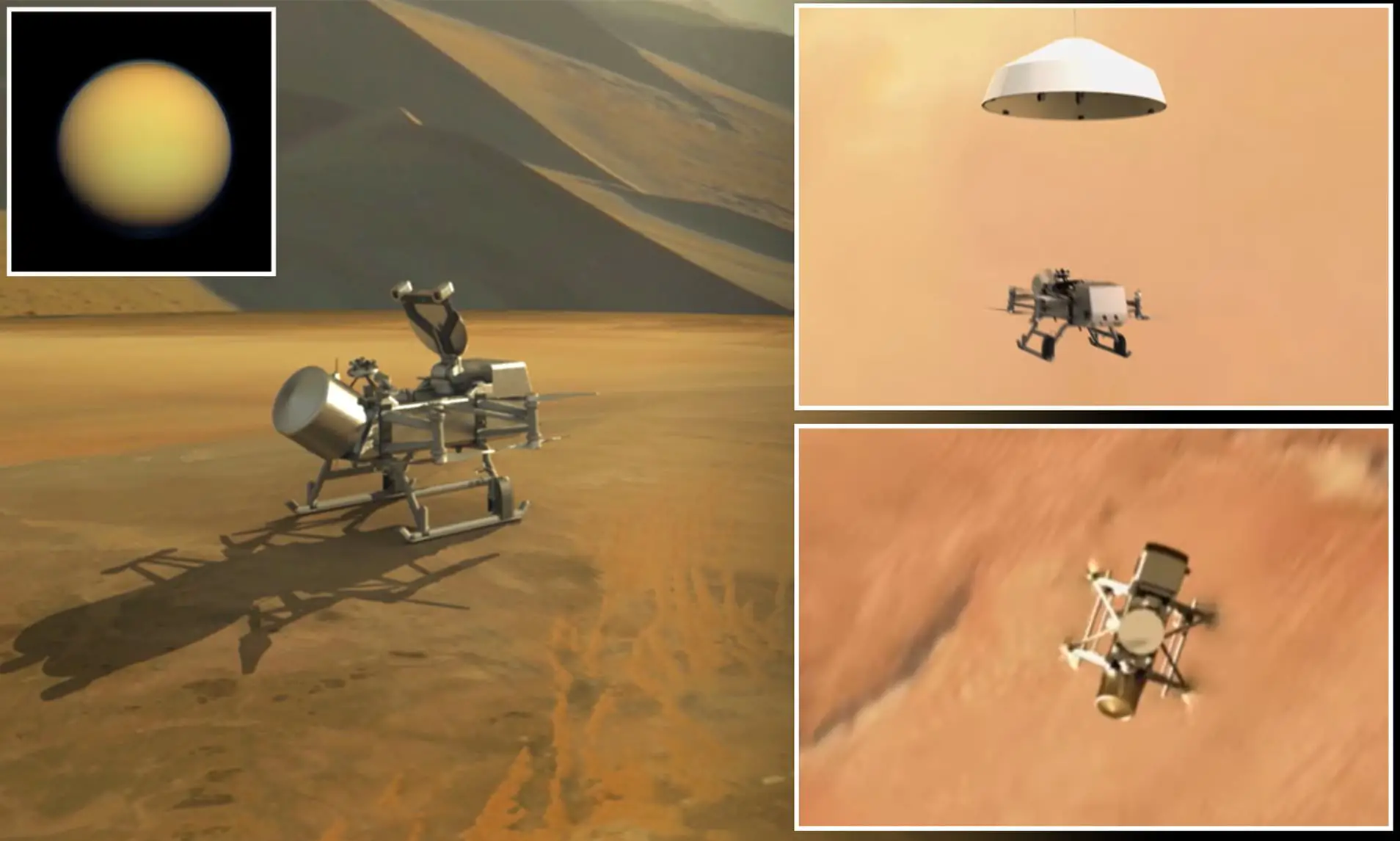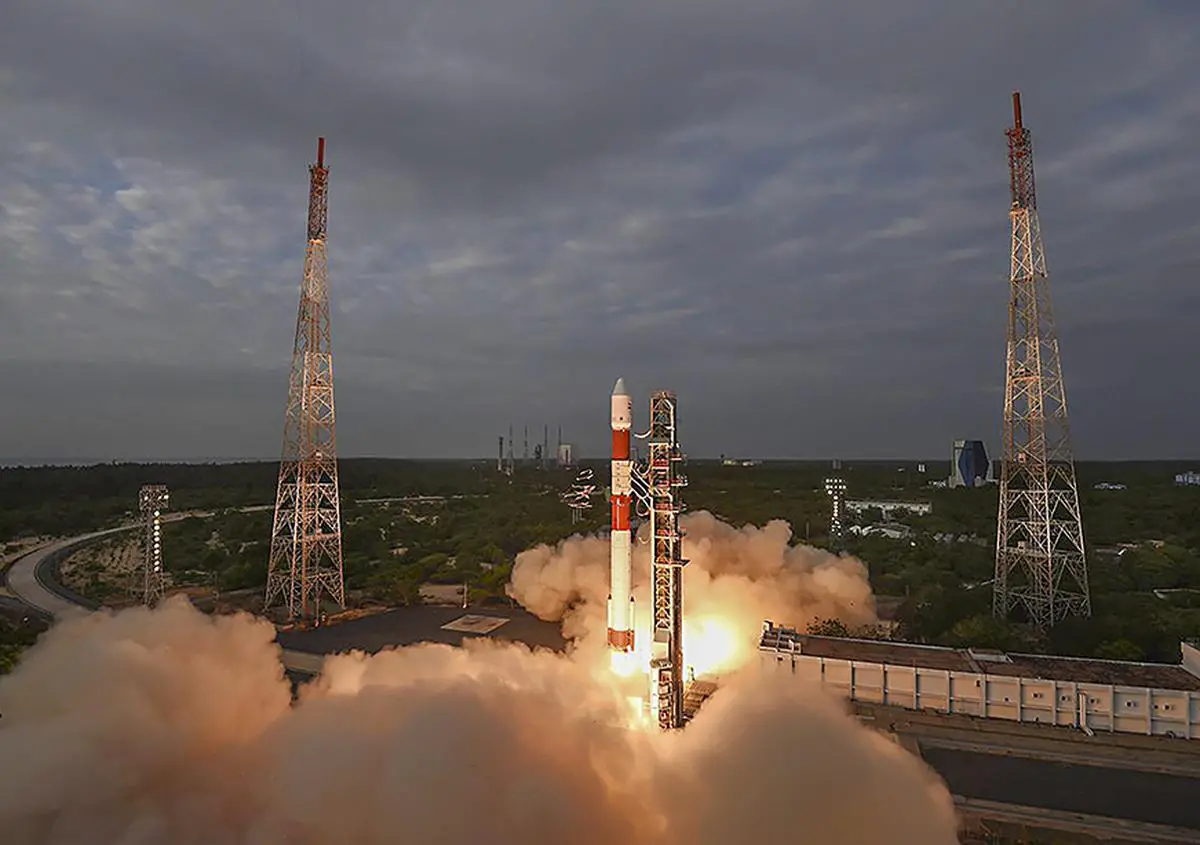“NASA dragonfly Mission to Saturn Moon Titan”


NASA is building a nuclear powered lander for exploring Titan-Saturn’s largest moon having a dense atmosphere and low gravity. Titan is a major target in NASA’s quest to assess habitability and search for potential signs of life beyond Earth on worlds across the solar system.
The lander Dragonfly rotorcraft, is NASA’s only mission to the surface of another ocean world. Titan is also thought to have a subsurface ocean of water.
It will be equipped with cameras, sensors and samplers to help examine swaths of Titan known to contain Organic materials that may have come in contact with liquid water beneath the organic-rich, icy surface. Dragonfly’s flight systems has so far undergone four testing in the past three years at NASA’s Langley Research Center in Virginia.
The car-sized drone, built and Operated by Johns Hopkins Applied Physics Laboratory (APL) in Maryland, will have four pairs of coaxial rotors (meaning one rotor is stacked above the other) and will slice through Titan’s dense, Nitrogen-rich atmosphere. “We completed more than 700 total runs, encompassing over 4,000 individual data points. All test objectives were successfully accomplished and the data will help increase confidence in our simulation models on Earth before extrapolating to Titan conditions.”
Titan, with its dense atmosphere and unique properties, is a prime candidate in the search for potential signs of life beyond Earth.
Titan, with its dense atmosphere and unique properties, is a prime candidate in the search for potential signs of life beyond Earth.
The Dragonfly lander is equipped with an set of cameras, sensors, and samplers, enabling it to search into areas known to contain organic materials. These materials may have come into contact with liquid water beneath Titan’s organic-rich, icy surface, raising a questions about the potential for habitability.
The car-sized drone is a marvel of engineering, constructed and operated by the Johns Hopkins Applied Physics Laboratory in Maryland. It boasts four pairs of coaxial rotors, allowing it to gracefully navigate Titan’s dense, nitrogen-rich atmosphere.
Over the past three years, the flight systems have undergone four rigorous testing phases, involving more than 700 runs and over 4,000 data points. These tests have been a resounding success, bolstering confidence in Earth-based simulation models before Dragonfly’s journey to Titan.
The future motto of Dragonfly’s mission is to unveil Titan’s secrets, bringing us one step closer to understanding the potential habitability of distant world.
Image source: https://encrypted-tbn0.gstatic.com/images?q=tbn:AN…2wdcpIqmZkWCKQYJZZpyf3sW3opPc1dAhPWc6qeE&usqp=CAU




